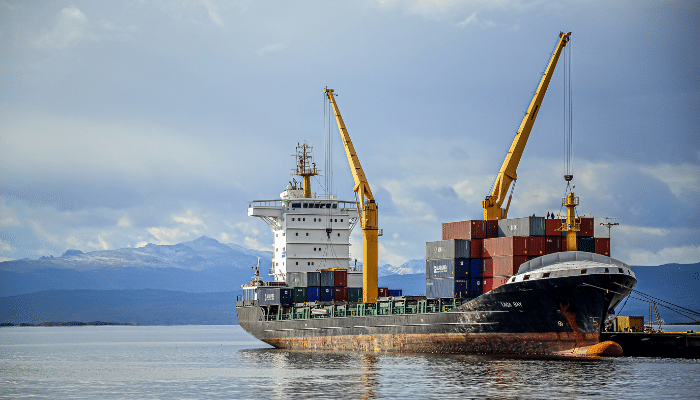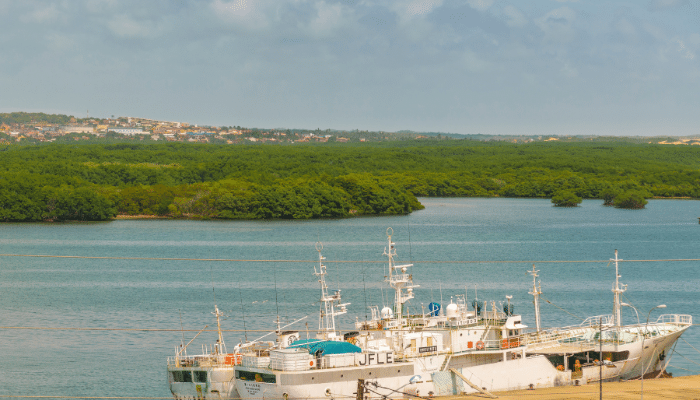2 Major Ports in East Timor
East Timor, also called Timor-Leste, is a Southeast Asian country. It consists of the eastern part of the island of Timor, whose western half falls under the administration of Indonesia.
Oil and gas account for about 90 % of the GDP, although the sector has done little to create more employment opportunities. Most people are poor, and malnutrition is common, especially in rural areas.
The majority are involved in agriculture; however, there is not enough produce, and the nation imports most of its food. It is also dependent on foreign aid.
East Timor has 2 major ports for conducting international maritime trade, namely the Port of Dili and the Tibar Bay Port, both of which will be discussed extensively in this article.
Port of Dili
Dili Port lies in East Timor, in the Farol neighbourhood, at the southern end of the Bay of Dili, which faces the Ombai Strait. The Port has a small, open harbour with a single quay that can accommodate just 2 to 3 vessels at once. Ships coming here need to self-load. Approximately 200,000 tonnes of cargo and 20,000 TEU are handled at the Dili Port.
It was the principal Port of Timor and its only facility for handling international trade; however, from September 30th 2022, the container operations from Dili were shifted to the newly opened Tibar Bay Port. Now, Dili Port accommodates only domestic passenger vessels and international cruise ships.
Dili Port has existed for a long time. A natural reef surrounds it, offering protection from harsh weather and strong winds. Still, during monsoon months from November till March end, vessels are slightly exposed to the northwesterly winds at Dili Port.
The Port can be approached through a narrow waterway amidst two reefs. The path has beacons; however, it is not recommended to enter the Port at night since there are many rocky reefs and unmarked wrecks in the bay, making it dangerous for the vessels.

Port History
There has been a port at Dili since 1769 when the Governor of Portuguese Timor wanted to decrease the power of the local influential families. To do so, he moved the colonial administration and 1200 people to the place that would eventually become present-day Dili.
Gradually, the Port developed; however, facilities remained minimal until the 20th century. When the wharf was completed, ships coming to the Port relied on barges for loading and unloading cargo.
After Indonesia occupied East Timor between 1975 and 1999, the Dili Port was given an international status. However, it did not welcome many ships, given its moderate water depth between 16 and 17 m. It was managed by a state-owned enterprise since 1984; however, its massive capital costs and limited turnover made it hard to operate the Port profitably.
Singaporean, Korean and Japanese ships visited the Port regularly. When the occupation was about to end, the vessel calls dropped. Just 1 Singaporean vessel reached Dili Port in 1998, and no international ship arrived the following year.
After 1999, the Port could not accommodate ships measuring more than 100 m lengthwise and having a draft of 8 m with a weight of over 5000 DWT. The berthing limit was 180 m, which was not enough to berth 2 ships at once.
For storage purposes, there are 4 public warehouses covering 3225 square metres and another warehouse allotted for use by the military only. There was an open storage area, too, spanning 6272 m2. Other cargo handling facilities and port equipment were also quite minimal, and tugboats were in short supply.
Although the capacity of the Port, in theory, was 500 to 700 tonnes for bagged goods like sugar and rice, in reality, it could not accommodate over 500 tonnes a day.
Port Challenges
Passenger ships were prioritised at Dili Port over cargo vessels, which led to a decrease in cargo volumes and an increase in unloading time and costs. It was said to be the worst Port in the region as cargo could also be trucked into the then province of East Timor at a lower cost by distributors in Kupang, West Timor.
Passenger services functioned twice a month to Ujung Pandang and Surabaya and less frequently to Jakarta, Irian Jaya and Banyuwangi in East Java.
Port Infrastructure
Dili Port is quite small, and today, it has a main wharf, which is 280 m long and has a maximum capacity for 3 ships since the wharf is divided into 3 berths. There are 2 RORO ramps, one at the eastern end and the other at the western end. A yacht anchorage area is on the port side of the wharf.
Vessels can enter the Port from 7:30 am to 5:30 pm, though the wharves and port gates remain open 24 hours a day. There are concerns about the Port’s maintenance and its port handling capacity. As of 2014, there were no management, maintenance and port check manuals available.
Another cause of concern expressed by many government officials was the rise of sea levels and its impact on the Port. Research has been conducted to establish the effects of a rise in sea level on Dili Port. However, there is not sufficient information regarding the same.
Tibar Bay Port
The Tibar Bay Port lies close to Dili, East Timor’s capital city. It is on the western part of Tibar Bay, just 12 km west of Dili. It is a recent construction that began operating on 30th September 2022.
The government of East Timor entered into an agreement with the Bollore Group in 2016 to build a new container facility at Tibar Bay. The 30-year contract was the first public-private partnership that was ever undertaken in East Timor.

Port History and Construction
It is the nation’s biggest private investment, amounting to a total of US $ 490 million. This project was given a heads-up by the authorities since there was only one Port in East Timor which could not handle all its trade and faced issues like congestion and buildup of cargo.
This port facility was planned to be a modern container handling terminal with a capacity of around 350,000 TEUs annually.
The construction involved 120 million cu ft of dredging, construction of storage spaces, housing, land reclamation, etc. The work continued in 2017-18, and the facility was scheduled to be completed by 2020 end; however, issues with subcontracting and funding delayed the progress. The project launching ceremony was held in July 2019, and construction began afterwards.
Port Infrastructure
Tibar Bay Port has the most expansive infrastructure in the country. It has a 630 m long wharf with a draft of 15 m and a container yard spanning 29 hectares. It can receive bigger ships than the Dili Port and has better operating economics.
In the first phase of operations, the Port can accommodate around 200,000 TEU annually. When it becomes completely operational, it will be the country’s only logistics hub for maritime transportation and trade.
After the Tibar Bay port opened, it relieved the Port of Dili, which could only accommodate ships with cranes, was operating beyond its capacity, causing delays in container processing and sometimes extra costs. Tibar Bay Port has an annual cargo capacity of up to a million containers and can store 20,000 containers.
Port Equipment
The Port has 2 ship-to-shore gantries, 4 rubber-tyred gantries, 10 terminal tractors and 16 trailers. Standing tall with a height of 80 m, the gantries are the tallest structures in East Timor and the Port’s main attraction. Tibar Bay Port has 29 acres of office areas, workshops and storage facilities.
As of January 2023, the Tibar Bay Port had 38 permanent staff and 32 workers. The number of workers is expected to reach 200 in the coming months.
You might also like to read-
- 10 Major Indian Navy Vessels
- 10 Major Ports Of Greece
- 10 Longest Fjords In The World
- 5 Major Ports In Cuba
- 10 Important Canals In The United States
Disclaimer :
The information contained in this website is for general information purposes only. While we endeavour to keep the information up to date and correct, we make no representations or warranties of any kind, express or implied, about the completeness, accuracy, reliability, suitability or availability with respect to the website or the information, products, services, or related graphics contained on the website for any purpose. Any reliance you place on such information is therefore strictly at your own risk.
In no event will we be liable for any loss or damage including without limitation, indirect or consequential loss or damage, or any loss or damage whatsoever arising from loss of data or profits arising out of, or in connection with, the use of this website.
Do you have info to share with us ? Suggest a correction
Disclaimer :
The information contained in this website is for general information purposes only. While we endeavour to keep the information up to date and correct, we make no representations or warranties of any kind, express or implied, about the completeness, accuracy, reliability, suitability or availability with respect to the website or the information, products, services, or related graphics contained on the website for any purpose. Any reliance you place on such information is therefore strictly at your own risk.
In no event will we be liable for any loss or damage including without limitation, indirect or consequential loss or damage, or any loss or damage whatsoever arising from loss of data or profits arising out of, or in connection with, the use of this website.

About Author
Zahra is an alumna of Miranda House, University of Delhi. She is an avid writer, possessing immaculate research and editing skills. Author of several academic papers, she has also worked as a freelance writer, producing many technical, creative and marketing pieces. A true aesthete at heart, she loves books a little more than anything else.
Latest Maritime Knowledge Articles You Would Like:
Subscribe To Our Newsletters
By subscribing, you agree to our Privacy Policy and may receive occasional deal communications; you can unsubscribe anytime.















